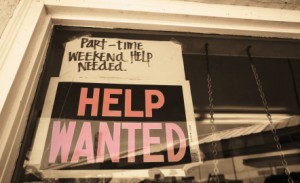College Admissions
College Admissions
Preparing for College
The Best College for You
What to Study
Applications
Education Options
Education Options
Private Universities
Public & State Universities
Community Colleges
Scholarships
Scholarships
African American Scholarships
Latino Scholarships
Native American Scholarships
Women Scholarships
College Grants
College Grants
Federal Grants
Merit Based Grants
Need Based Grants
Student Loans
Student Loans
Federal Student Loans
State Student Loans
No Co-signer Student Loans
Bad Credit Loans
Student Loan Consolidation
College Survival
College Survival
Financial Aid Tips
The Digital Student Blog
How many times have you tried, unsuccessfully, to explain your feelings to adults?
That you love the competition and the socialization that video games provide. That you simply enjoy trying to figure the game out.
As for the violent games, well, they add that one additional level, providing action and a rush of adrenalin that mirrors what you feel when competing on a field or in the gym.
 Most importantly, they help you cope with anger and stress. After a particularly difficult day or week, there is nothing like immersing oneself in a violent video game. I mean, where else can you take out your anger in such an innocent way?
Most importantly, they help you cope with anger and stress. After a particularly difficult day or week, there is nothing like immersing oneself in a violent video game. I mean, where else can you take out your anger in such an innocent way?
That explanation is particularly difficult with mom who can understand the competition and thus is willing to accept games like Pac Man or Madden football. But for the life of her, she simply cannot understand your enjoyment with a game like Grand Theft Auto?
Support for Violent Video Games
Well, for those who have tried to somehow explain, you can now point the skeptics to yet another study that indicates that concerns with violent video games is over blown. That in fact, researchers presenting at the New York University ‘Games for Learning’ symposium, have reached the conclusion that even violent video games can be utilized as learning tools.
Consider first that Sigmund Tobias of the State University of New York at Albany noted that an “Israeli air force study found that students who played the game Space Fortress had better rankings in their pilot training than students who did not.”
Even better, consider what Daphne Bavelier, an assistant professor in the department of brain and cognitive science at the University of Rochester who has focused her research on games like Unreal Tournament and Medal of Honor, had to say about fast-paced shooter games:
 “People that play these fast-paced games have better vision, better attention, and better cognition,” she stated. She went on to suggest that such games could well improve math performance and other brain tasks as well.
“People that play these fast-paced games have better vision, better attention, and better cognition,” she stated. She went on to suggest that such games could well improve math performance and other brain tasks as well.
“We are testing this hypothesis that when you play an action video game, what you do is you learn to better allocate your resources,” she offered. “In a sense you learn to learn. … You become very good at adapting to whatever is asked of you.”
Just Having Fun
Of course, none of these has any ultimate implication for why it is that you play. As we said, for most of us, it is all about the competition, the challenge, and the chance to put day to day struggles aside for a period of time.
You couldn’t care less as to whether your peripheral vision has been enhanced or that these games test your ability to detect small activities on the screen. In reality, for you it is nothing more than simply having fun.
But it is nice to see that some folks have begun to question the typical reaction, that because many adults cannot understand the attraction of such games, they immediately insist that the games cannot be good for us. More to the point it is nice to see that a professor like Bavelier could actually suggest that first-person shooter games “eventually will become part of school curricula” even if “it’s going to take a generation” to accept such findings.
Unrealistic to Expect Understanding
OK, it is probably wishful thinking on our part that you might be able to completely change your parents mind. Pointing them in the direction of other studies could even work against you in the long run.
But at least it is reinforcing to read that college professors actually are beginning to understand that you and your buddies love for a little video warfare is not a sign of sickness, that you can enjoy the video games that feature violence without becoming a menace to society.
Medal of Honor anyone?
Readers of our blog know our emphasis on value. For that reason we have noted the importance of the payback ratio and the concept of the honors college.
 Furthering our value concept, we have also posted our five reasons to consider your local state university. All told, it is our view that state universities consistently offer some of the best values going.
Furthering our value concept, we have also posted our five reasons to consider your local state university. All told, it is our view that state universities consistently offer some of the best values going.
But such a position must go hand in hand with the most important statistic, college completion. While the public is often bombarded with America’s K-12 school dropout issue, the fact is that college dropout rates far exceed what transpires in the K-12 sector.
These poor results as well as lists of the best and worst college graduation rates recently hit the headlines with the release of the American Enterprise Institute for Public Policy Research’s release of Diplomas and Dropouts (PDF).The private, nonpartisan, not-for-profit institution dedicated to research and education on issues of government, politics, economics, and social has compiled the completion rates of all American colleges and universities.
For the record, the study utilizes the common six-year completion method, i.e. those who complete their degree within six years of entering school. While we would prefer to see summaries of those who complete their program within four years, the six-year figure is the going standard. Those reviewing the report will find the highest and lowest grad rates for students based on school selectivity but the report does not offer a complete breakout for state universities.
Given our ongoing support of state university systems, we took the time to review the AEI report for readers. Below you will find our list of the top ten state universities by graduation rate. All offer very strong numbers.
To be sure, not all of these schools have the same selectivity rating. And readers must understand that we cannot fully articulate the reasons why one school tops another. We do not know if it is because of stronger support for students, better instruction, or the proper level of entrance criteria. In fact we would guess it is most probably a combination of all of these elements and more.
The bottom line is not all schools are as successful as their counterparts. To get a full sense, we also offer a complete summary of all state institutions after our top ten. To give readers some other key data, our final list includes the percent graduation rate, in-state tuition and fee costs, total enrollment and the state graduation percentage (average of all colleges in that respective state).
The Top Ten State Universities by Graduation Rate
1. University of Virginia: 93%
2. University of California, Los Angeles: 90%
3. (tie) University of California, Berkeley: 88%
3. (tie) University of Michigan: 88%
5. (tie) Penn State 84%
5. (tie) University of California, San Diego: 84%
7. University of North Carolina 83%
8. University of Illinois: 82%
9. University of Florida: 81%
10. (tie) University of California, Irvine: 80%
10. (tie) University of Maryland: 80%
All State institutions:
Alabama
University of Alabama: 65% – $5,700 – 23,499
State Average: 42.9%
Alaska
University of Alaska: 20% – $4,477 – 10,990
State Average: 24.0%
Arizona
University of Arizona: 56% – $5,048 – 33,447
State Average: 52.0%
Arkansas
University of Arkansas: 58% – $6,038 – 15,913
State Average: 48.5%
California
University of California, Berkeley: 88% – $7,165 – 33,855
University of California, Davis: 79% – $8,124 – 28,868
University of California, Irvine: 80% – $7,556 – 25,839
University of California, Los Angeles: 90% – $7,165 – 36,733
University of California, San Diego: 84% – $7,456 – 26,466
State Average: 59.7%
* We have provided the data for the five largest branches.
Colorado
University of Colorado at Boulder: 67% – $6,636 – 28,171
State Average: 44.7%
Connecticut
University of Connecticut: 74% – $8,852 – 21,373
State Average: 60.8%
Delaware
University of Delaware: 78% – $8,150 – 18,716
State Average 47.0%
Florida
University of Florida: 81% – $3,257 – 47,600
State Average: 48.0%
Georgia
University of Georgia: 77% – $5,622 – 31,008
State Average: 44.7%
Hawaii
University of Hawaii: 55% – $5,390 – 16,505
State Average: 43.2%
Idaho
University of Idaho: 53% – $4,410 – 10,138
State Average: 41.7%
Illinois
University of Illinois: 82% – $11,130 – 40,248
State Average: 56.3%
Indiana
Indiana University: 72% – $7,837 – 36,151
State Average 53.1%
Iowa
University of Iowa: 66% – $6,293 – 25,685
State Average: 57.0%
Kansas
University of Kansas: 60% – $6,600 – 24,988
State Average: 46.7%
Kentucky
University of Kentucky: 62% – $7,096 – 23,600
State Average: 44.3%
Louisiana
Louisiana State University: 60% – $4,543 – 26,901
State Average: 40.1%
Maine
University of Maine: 59% – $8,330 – 10,130
State Average: 57.4%
Maryland
University of Maryland: 80% – $7,969 – 32,660
State Average: 59.4%
Massachusetts
University of Massachusetts: 66% – $9,921 – 22,655
State Average: 66.6%
Michigan
University of Michigan: 88% – $10,447 – 39,199
State Average: 52.1%
Minnesota
University of Minnesota: 63% – $9,598 – 41,927
State Average: 62.7%
Mississippi
Mississippi State University: 58% – $4,978 – 14,932
University of Mississippi: 53% – $4,932 – 13,977
State Average: 46.1%
Missouri
University of Missouri: 67% – $7,603 – 25,714
State Average: 51.8%
Montana
University of Montana: 42% – $5,141 – 12,129
State Average: 40.8%
Nebraska
University of Nebraska: 63% – $6,216 – 20,781
State Average: 52.5%
Nevada
University of Nevada: 41% – $4,201 – 21,938
State Average: 38.0%
New Hampshire
University of New Hampshire: 73% – $11,070 – 13,620
State Average: 57.3%
New Jersey
Rutgers University: 73% – $10,686 – 31,188
State Average: 57.3%
New Mexico
University of New Mexico: 44% – $4,571 – 20,870
State Average: 40.2%
New York
Stony Brook University: 59% – $5,760 – 20,573
SUNY at Albany: 64% – $6,018 – 15,590
SUNY at Binghamton: 77% – $6,012 – 13,376
SUNY at Buffalo: 61% – $6,218 – 25,252
State Average: 59.6%
North Carolina
University of North Carolina: 83% – $5,340 – 25,089
State Average 50.5%
North Dakota
University of North Dakota: 54% – $6,060 – 10,965
State Average: 44.0%
Ohio
Ohio State University: 71% – $8,676 – 48,583
State Average: 54.5%
Oklahoma
University of Oklahoma: 62% – $6,507 – 21,945
State Average: 38.8%
Oregon
University of Oregon: 65% – $6,174 – 18,902
State Average: 54.3%
Pennsylvania
Penn State: 84% – $12,844 – 41,817
State Average: 64.6%
Rhode Island
University of Rhode Island: 58% – $8,184 – 13,655
State Average: 67.1%
South Carolina
University of South Carolina: 63% – $8,346 – 23,955
State Average: 50.0%
South Dakota
University of South Dakota: 48% – $5,752 – 7,041
State Average: 43.3%
Tennessee
University of Tennessee: 58% – $5,932 – 27,620
State Average: 48.5%
Texas
University of Texas: 78% – $7,670 – 47,490
State Average: 45.8%
Utah
University of Utah: 56% – $4,988 – 22,845
State Average: 50.5%
Vermont
University of Vermont: 72% – $12,054 – 11,061
State Average: 56.1%
Virginia
University of Virginia: 93% – $8,690 – 21,889
State Average: 56.7%
Washington
University of Washington: 75% – $6,385 – 36,120
State Average: 59.2%
West Virginia
West Virginia University: 55% – $4,722 – 25,673
State Average: 42.6%
Wisconsin
University of Wisconsin: 79% – $7,185 – 38,652
State Average: 55.6%
Wyoming
University of Wyoming: 57% – $3,366 – 10,549
State Average: 57.0%
Once upon a time, there was a belief that there was such a thing as a good loan with the general consensus being that the two most common ‘good’ forms of borrowing were home and college loans.
Then came the recent economic downturn and the housing crisis. All of a sudden, many homeowners found themselves owing more on their homes then their houses were worth. That development now has many folks realizing that borrowing funds for a home may not always be a good idea.
 In addition to the housing meltdown, the economic crisis has taken a toll on employment opportunities. Those graduating from college this spring are about to enter what has been dubbed the worst job market in years.
In addition to the housing meltdown, the economic crisis has taken a toll on employment opportunities. Those graduating from college this spring are about to enter what has been dubbed the worst job market in years.
With limited job prospects, large numbers of graduating students are being forced to take jobs that do not require a college diploma. If you are one of the students who borrowed significant sums of money only to be forced to take a job waiting tables or bar tending, you now have begun wondering why borrowing for college was ever seen as a ‘good’ idea.
College Grads Seeking Work
According to the Center for Labor Marketing Studies at Northeastern University, the percentage of graduates age 25 and under with a BA degree working in a job requiring a college degree has now dropped below 50 (as of 2009). Therefore, if you are graduating this spring, you face the distinct possibility (a one in two chance) that you will have to enter the work force by taking a job that does not require a bachelor’s degree. Such a development also means that one out of every two graduates cannot expect to earn a salary commensurate with their original career aspiration.
If you are a girl, the survey indicates that you have a slightly better chance to secure a job requiring a college degree. For women 25 and under, 55% (as compared to 49% for men) are currently working in a job that at least requires a college degree.
Worse yet is the data for young adults of Hispanic or African-American descent. For Hispanic males, just 40% of those with a degree are working in a job that requires a diploma. For black males, the number is a paltry 35%.
Loans Due and No Funds to Pay Them
While these percentages represent some of the worst numbers in the past 20 years, the current belief is that the downward trend will continue for the foreseeable future. Given the data, those pursuing a college diploma need to carefully reassess their aspirations. In particular, those thinking about borrowing money to pursue a degree need to carefully take stock of the current job environment.
Data clearly indicates that college graduates who take jobs below their education level will earn less in their initial work years. In fact, it can take seven to nine years to match the earnings of graduates who were able to land career-track employment upon graduation.
When one combines such data with other troubling numbers, that two-thirds of college students are graduating with student loans and that 25% of those who borrow end up owing more than $30,500, the results are startling. That is why 40 percent of seniors surveyed by NACE said they expect to need financial help from their parents after college.
 The result is that students in this economic climate who borrowed even modest amounts of money have additional pressures upon them, the need to pay college loans. For that reason, graduates often find themselves taking any job that is offered just so as to begin the process of paying down those loans.
The result is that students in this economic climate who borrowed even modest amounts of money have additional pressures upon them, the need to pay college loans. For that reason, graduates often find themselves taking any job that is offered just so as to begin the process of paying down those loans.
Even when employment options are available, those who borrowed for school are driven to select the job that pays the most. Students with significant debt generally continue to choose options based on what a job pays rather than pursuing the original career that inspired them to attend college in the first place. Significant college debt loads also lead to the potential delay in starting a family and/or buying a house.
When it comes to borrowing for college, the standard rule at one time was not to borrow more than your projected starting salary. Once upon a time, students could roughly gauge just what that starting salary would be.
Given the recent downturn and the difficulty finding work in your chosen field, such projections are no longer valid. In fact, given today’s economic climate, your starting salary will likely be far lower than those original projections for the foreseeable future.
That means that loans of any size will prove extremely challenging to pay off. Ultimately, borrowing money for college during an economic downturns appears to be a very bad idea.
Cell phones and sex don’t mix – and we are not talking about sexting.
One really good thing about surfing the internet, I am usually sitting down when I click on that story of stories – the one that makes me sit up very straight and utter, are you kidding me? Of course, it is usually the s word I utter but you get the point.
The other day I am surfing Arianna’s wondrous site, The Huffington Post, to see which writer is taking that raving maniac Glen Beck to task today when I stumble on to the latest study, this one about cell phone use and texting.
In the realm of you have to be kidding, consider these results:
“Twenty-four percent of users under 25 and 12 percent of users over 25 allow electronic message to interrupt them while they’re in the bathroom.”
Even while on the hopper? Is nothing sacred?
And then this:
 “…over 40% of respondents saying they didn’t mind being interrupted for a message. In fact, 32% said a meal was not off limits while 7% said they’d even check out a message during an intimate moment.”
“…over 40% of respondents saying they didn’t mind being interrupted for a message. In fact, 32% said a meal was not off limits while 7% said they’d even check out a message during an intimate moment.”
And, what mind you, constitutes an intimate moment? I guess just what you might think:
“The study found that 11 percent admit to checking updates during sex (6 percent of users over 25 do the same).
“While the scope of this study is fairly limited, the results seem to echo recent findings that estimated 15 percent of Americans have interrupted sex to answer a cell phone call.”
No, nothing appears sacred anymore.
Now I stumbled onto this amazing set of revelations just after catching one of those moments we could dub a fabulous reality, the amazing photo of Tiger Woods tapping away on his cell phone while playing a practice round at the Masters. The amazing moment that will form the perfect photo over at TMZ whenever some other young lady feels the need to come clean and admit she has spent time with Tiger also led to a number of double entendre’s since reportedly Woods was filming his friend Mark O’Meara’s, ahem, putting stroke.
For the cell phone, etiquette-challenged young, we remind you of some of the basics:
Lights Out, Phone Off: Now this usually means that phones should be turned off in movie theaters, playhouses, and other stage venues. The ringer and the lighted screen both deemed as negatives in such a setting. Could it be that the 11 percenters never turn off the lights?
 Love the One You’re With: This usually translates to the notion that it is rude to take a cell phone call during a social engagement. Even more pertinent, it is deemed inconsiderate to take a call in the middle of a conversation. If by the slimmest of chances you truly think you must answer, you are supposed to ask permission to do so. Could it be that those who check updates during sex see the act as so distant it does not qualify as either a social engagement or a conversation? And what possibly could your significant other say when you ask, “Mind if take this call?”
Love the One You’re With: This usually translates to the notion that it is rude to take a cell phone call during a social engagement. Even more pertinent, it is deemed inconsiderate to take a call in the middle of a conversation. If by the slimmest of chances you truly think you must answer, you are supposed to ask permission to do so. Could it be that those who check updates during sex see the act as so distant it does not qualify as either a social engagement or a conversation? And what possibly could your significant other say when you ask, “Mind if take this call?”
Use Common Sense: This often translates to turning your phone off before a job interview, your best friend’s wedding or Grampa’s funeral. If the phone should be off anyplace a quiet atmosphere is expected, then why in heaven’s name would it be on in the bedroom?
Employ the Ten Foot Rule: The theory is you should maintain a distance of at least 10-feet from the nearest person when talking on a cell phone. Tough to maintain this standard even in a king size bed.
Times have surely changed. Whereas once upon a time the gentleman held the car door for the lady, today he is just as likely to be the passenger in her car.
Today’s digital world no doubt presents new challenges when it comes to manners and etiquette. That said remember the basics:
Lights Out, Phone Off – Love the One You’re With – Use Common Sense – Employ the Ten Foot Rule.
And then add this one other:
Keep the Personal Personal: on and off the phone.
All federal loans set to follow the Direct Loan program format.
Lost in all the hype over the passage of the landmark health care bill was a provision in the bill to revamp the federal student loan program. The legislation will put an end to the popular FFEL Program and thus push all federal college loans into the Direct Loan format.
The FFEL and DL Programs
 The Federal Family Education Loan Program (“FFEL Program” or “FFELP”) is often referred to as the federally guaranteed student loan program. In FY 2008, approximately 75% of all colleges participated in this lending option.
The Federal Family Education Loan Program (“FFEL Program” or “FFELP”) is often referred to as the federally guaranteed student loan program. In FY 2008, approximately 75% of all colleges participated in this lending option.
As opposed to the loans originating from the federal government, in the FFEL program the loan funds come from banks and other financial institutions. Because of the large number of entities offering such loans, colleges participating in the FFEL program were able to maximize borrower choice.
In addition, the FFEL program offered the same set of loan options as the Direct Loan program: Stafford, PLUS and Consolidation loans.
Funds for the William D. Ford Federal Direct Loan Program (“Direct Loans” Program or “DLP”) come directly from the US Department of Education (which gets the funds from the US Treasury). Because of the funding source, this source of aid has not experienced the same funding issues as FFELP has during the current credit crisis.
Program Differences
Critical differences have begun emerging within the two programs. First, as noted above, as the credit crisis worsened and banks tightened their lending practices, less money was available to students in the form of FFELP loans. In contrast, DLP loans remained available.
Unfortunately, the Ensuring Continued Access to Student Loans Act of 2008 (ECASLA) did not address funding issues in all loan programs, just the Stafford and PLUS loan programs. The indirect result was that consolidation loans originating after October 1, 2007 became unprofitable for FFEL program lenders. Because of that development, most of the FFELP lenders have stopped offering consolidation loans.
In contrast, consolidation loans continued to remain available from the Direct Loan program but borrowers in the FFEL program generally could only consolidate their loans by moving into the Direct Loan program.
Two other major differences tend to make the Direct Loan option a better one for students. First, the interest rate on the PLUS loan maxes out at 8.5% in the FFEL Program. For the Direct Loan program, the maximum rate tops out at 7.9% for the PLUS. However, the interest rate on the Stafford Loan is identical in both programs.
 Independent analysis has revealed that parents are more likely to obtain a PLUS loan approval in the Direct Loan program than in the FFEL program. The 2007-08 National Postsecondary Student Aid Study (NPSAS) suggests that the Parent PLUS loan denial rate in the FFEL program in 2007-08 was double the Parent PLUS loan denial rate in the Direct Loan program.
Independent analysis has revealed that parents are more likely to obtain a PLUS loan approval in the Direct Loan program than in the FFEL program. The 2007-08 National Postsecondary Student Aid Study (NPSAS) suggests that the Parent PLUS loan denial rate in the FFEL program in 2007-08 was double the Parent PLUS loan denial rate in the Direct Loan program.
Lastly, the new Public Service Loan Forgiveness option is available to students only in the Direct Loan program.
Customer Service Impact for Students
On the plus side, according to the Congressional Budget Office estimates, eliminating the middleman from the loan process will save the federal government between $6 billion and $7 billion per year. Those savings are reportedly possible because the government has paid private banks billions of dollars in subsidies to encourage those institutions to loan to students.
On the negative side, the changes will result in the loss of a number of valuable agencies.
But for most college students, the major question centers upon how the legislation affects them and their families. The answer is that it will impact students according to their financial status.
 An enormous increase this year in Pell grants was set to create a major shortfall in fund for many low-income students. The legislative change ensures that the Pell grant program will not only remain solvent, it will provide annual increases in the maximum grant allocation for the foreseeable future.
An enormous increase this year in Pell grants was set to create a major shortfall in fund for many low-income students. The legislative change ensures that the Pell grant program will not only remain solvent, it will provide annual increases in the maximum grant allocation for the foreseeable future.
Second, the funding level for students will be more secure. Therefore, those students who recently found loans drying up during the fiscal crisis will now know that such funds will remain available.
Lastly, the legislation will do nothing to negatively impact existing loans including private loans. But for those individuals who later qualify for the Income-Based Repayment Program, the capped rate will drop from 15% to 10% of discretionary income and shorten the repayment window from 25 to 20 years.
In actuality, the greatest impact will be felt with the school’s financial aid officers. One critical outcome is that those individuals will no longer play a role in which private lenders are used to originate those loans for students.
But of course, at this point, only the House has approved the bill. The Senate is scheduled to take up the bill later in the week.
There is a great deal of hope among college basketball fanatics for a KU vs. UK NCAA Final in 2010. For those not in the know, KU is Kansas University, the number one overall seed in the tournament. UK is the University of Kentucky, the team with the best overall player in freshman John Wall.
But I for one am hoping for a different result. I am hoping that Kentucky gets banished quickly for more reasons than the man who was hired to coach the team.
 Each year, Derrick Z. Jackson, an African-American editorial writer for the Boston Globe, takes the time to scrub the NCAA graduation data. He is not easily fooled by the likes of the National Collegiate Athletic Association interim president Jim Isch who earlier this year implied that the NCAA emphasis on academics had helped raise the overall graduation rate for college basketball nearly 10 percentage points over the last eight years.
Each year, Derrick Z. Jackson, an African-American editorial writer for the Boston Globe, takes the time to scrub the NCAA graduation data. He is not easily fooled by the likes of the National Collegiate Athletic Association interim president Jim Isch who earlier this year implied that the NCAA emphasis on academics had helped raise the overall graduation rate for college basketball nearly 10 percentage points over the last eight years.
Those rooting for a Kansas-Kentucky final should look at some of the data Jackson has uncovered. First off, he notes that Kentucky cannot really boast of academics at all, not with a basketball Graduation Success Rate of just 18 percent for its black athletes. And not when its GSR for basketball is but 31 percent overall.
In fact, Jackson did some extensive digging and found that Kentucky’s graduation rate for its black players over the last six years tops out at 18%. The five other years the school posted black graduation rates of 17, 9, 17, 17, and zero. And just to clarify that he is not cherry picking, going back ten years the black player graduation rate has never risen above 29 percent.
It is important to recognize that these rates do not reflect the all-too-often explanation offered by sports junkies – that these top programs post poor rates simply because their athletes leave early for pro basketball. The fact is, the NCAA adjusts these graduation-rate reports for those players leaving a school, for pro basketball or for another school, as long as those athletes were in good academic standing at the time they made the move.
So you will not find me rooting for Kentucky to make it to the finals. Especially not with a coach who has twice left programs that have had their accomplishments rescinded because of rule infractions.
In addition, I no longer can root for Duke, a school that does graduate its players yet accepts athletes to fill out its athletic rosters that do not have the requisite SAT scores or academic qualifications that non-athletes must have to be accepted at the school.  If you care about the idea that the NCAA tournament is supposed to involve amateurs enrolled in a college, then you will not root for Maryland (a zero black graduation rate the past three years and 8 percent currently overall), Texas (black graduation rates the past three years of 29, 14 and 22 percent), Nevada Las Vegas (black player grad rates of 13, 10, 10, 14, and 17 percent the last five years), or the University of California at Berkeley (a GSR for both its black and white players of zero – as opposed to the overall campus graduation rate of 85 percent (62 percent for black students). Other teams that stretch the term student-athlete beyond recognition are New Mexico State, Washington, Missouri, Arkansas-Pine Bluff, and Baylor.
If you care about the idea that the NCAA tournament is supposed to involve amateurs enrolled in a college, then you will not root for Maryland (a zero black graduation rate the past three years and 8 percent currently overall), Texas (black graduation rates the past three years of 29, 14 and 22 percent), Nevada Las Vegas (black player grad rates of 13, 10, 10, 14, and 17 percent the last five years), or the University of California at Berkeley (a GSR for both its black and white players of zero – as opposed to the overall campus graduation rate of 85 percent (62 percent for black students). Other teams that stretch the term student-athlete beyond recognition are New Mexico State, Washington, Missouri, Arkansas-Pine Bluff, and Baylor.
Instead, you could do as I and pull for the teams that play high caliber ball and play it with student-athletes. Try anyone of the following, all posting grad rates of 90% or more: Brigham Young, Notre Dame, Utah State, Wake Forest, Wofford, Lehigh, Vermont and Villanova.
I guess, of the top four seeds I could live with Kansas, a respectable 73% GSR, or Duke, graduating the folks it accepts with a GSR of 92%, making it to the finals. But while Kentucky is abysmal, the final top four selection, Syracuse, is no shining star either with a GSR of 50%.
Imagine a day when the NCAA would put its reputation in front of dollars and cents and actually insist on some minimum graduation standards for those teams accepted to the Big Dance.
Once upon a time, it was lumped together with the harshest of drugs. But in recent years marijuana has started claiming a new place in society.
As states continue to enact medical marijuana usage legislation, those responsible for implementing the new laws have been charged with designing growth and distribution requirements and protocols. The result is an emerging industry that some think could one day rival a significant sector of the pharmaceutical industry.
As a student, dare we even say it, you may be interested in knowing there is a college that features training in this emerging field.
Oaksterdam University
Founded in November 2007 by Richard Lee, Oaksterdam University sounds like a high school dropout’s dream. The school began with an “extremely provocative advertisement in the East Bay Express proclaiming ‘Cannabis Industry Now Hiring’.”
 Inspired by his visit to the cannabis college in Amsterdam, Lee envisioned a school that offered a different program than the horticulture focus of the college in Amsterdam.
Inspired by his visit to the cannabis college in Amsterdam, Lee envisioned a school that offered a different program than the horticulture focus of the college in Amsterdam.
While offering a program that still does fundamental study in horticulture, Lee expanded on the cannabis college idea to create a trade school. His idea was to try to legitimize the cannabis industry, particularly as it relates to the field of medical marijuana.
According to the school’s web site, “20 lucky and trailblazing students packed into a small classroom in Oaksterdam located on 15th Street” in what was to be the first official course offering. That class reportedly was taught by some of the biggest names in the cannabis industry: Chris Conrad, Richard Lee, Lawrence Lichter, and Dennis Peron.
Soon armed with a 3-month waiting list for class openings, the school began expanding. As class sizes grew, course offerings grew in frequency and in format.
In 2008, Lee opened a satellite school in Los Angeles. Later, when Michigan passed its medical cannabis law, Oaksterdam University brought its program to Ann Arbor and held the first Michigan class in May of 2009.
Shortly thereafter, the latest campus, North Bay in Sebastopol, California was opened. And in November of 2009 the main campus branch moved to a sprawling 30,000 sq.ft. campus at 1600 Broadway, in Oakland. The new campus is home to numerous classrooms, two auditoriums, a grow lab, and a theater.
Course Programs
Oaksterdam University offers two distinctive formats. For those with a casual interest, the school offers a number of weekend seminars at $250 per seminar.
For those with a desire to learn more about cannabis, the school also offers a comprehensive Semester Program called the Classic Semester. This format meets once a week for 13 weeks with two and a half hours of instruction per class (a total of roughly 32 hours of instruction) and costs $650.
In addition to expert instructors and the guest speakers, each week also includes a comprehensive grow lab experience. According to the Oaksterdam site, accomplished horticulturists walk students, week-by-week, through growing their first garden.
Those students choosing the Semester Course may earn a number of certificates. The school offers two fundamental certificates: a Certificate of Attendance for those who attend all classes and a Certificate of Completion for those who attend all classes, complete the midterm and pass the final.
In addition, for the more industrious, the school offers a Certificate of Completion with Honors. To receive such designation a student must also complete all weekly homework assignments and attend a field trip, in addition to the basic attendance and exam criteria. Lastly, a Certificate of Achievement with Honors is awarded to the Class Valedictorian, and in some cases, to those demonstrating “extraordinary levels of valor and volunteerism.”
 For those wondering more about the curriculum, the Classic Semester offers an eclectic mix of topics including two Horticulture offerings: Horticulture and Horticulture: Advanced Grow. It also offers several legal units including: Federal Vs State Law; Legal Rights; and a Know Your Rights workshop.
For those wondering more about the curriculum, the Classic Semester offers an eclectic mix of topics including two Horticulture offerings: Horticulture and Horticulture: Advanced Grow. It also offers several legal units including: Federal Vs State Law; Legal Rights; and a Know Your Rights workshop.
As for an understanding of the medical marijuana industry, other units offered include Politics & History; Patient Relations (formerly Budtending); Dispensary Operations (formerly Dispensary Management); and Procurement & Allocation (formerly Distribution),
In addition, time is spent on three Methods of Ingestion offerings: Extracts; Cooking (includes a step-by-step tutorial on how to make cannabutter); and Vaporizing. There is also a science offering called The Science of Cannabis (formerly Medical Cannabis) as well as two business based offerings: Economic$ and Cannabusiness: Legal Business Structures.
The goal of the program is simple – to help a student either prepare for
employment in a dispensary or to start a business of their own.
Interested Students
Students interested in enrolling will be pleased to learn that admission is essentially first paid, first served. No one is interested in your GPA, or your SAT scores. There is no need to have a wealth of extracurricular activities on your resume – the school doesn’t even ask for a resume.
But if you think it is all a walk in the park you may want to think again. If you are worried that your well-to-do uncle may disown you for selecting this career path you need to understand that your real, personal information must be included on your enrollment form. A failure to provide accurate information (no fictitious names like Token White) could result in your being denied a seat in the class.
And unfortunately, there are no scholarships available. Oaksterdam University indicates it needs your tuition to cover expenses. The school currently does not offer any online courses.
 And there is also that matter of a test, albeit optional, for those students who want certification from Oaksterdam University. To pass, students need a score of 75% or better.
And there is also that matter of a test, albeit optional, for those students who want certification from Oaksterdam University. To pass, students need a score of 75% or better.
Lastly, there are required textbooks: Marijuana Horticulture: The Indoor/Outdoor Medical Grower’s Bible, by Jorge Cervantes ($29.95 + tax), and Buds For Less, by SeeMoreBuds ($18.95 + tax). There is also a required DVD purchase: Busted! Flex Your Rights ($16.00 + tax).
Worse yet, there is even recommended supplemental texts if you are serious about the subject. They are not required mind you, just suggestions to expand your education. They include the Marijuana Medical Handbook, the Big Book of Buds Version 3, the Marijuana Garden Saver, Ask Ed, Marijuana Gold: Trash to Stash, Marijuana Cooking: Good Medicine Made Easy, and Organic Marijuana, Soma Style: The Pleasures of Cultivating Connoisseur Cannabis.
Most importantly, those who take their out of school studies/experiments/time too seriously need to understand that class attendance is expected. Refunds are not available for missed classes unless 7 days prior notice is provided (apparently planned parties may work).
A Leg Up?
And when it comes to promises, the school makes no pretenses about the certification that students can earn. When it comes to applying for a job at a dispensary, the school “hopes” that the certification program will give a student an advantage in the selection process over someone who is not certified.
According to University of North Texas professor Jennifer Acker
marriage is very easy to get into. In fact in her home state one only needs a driver’s license to apply for a marriage license (could someone connect those dots for us?).
But, Professor Acker notes, marriage is not so easy to escape.
“Divorce ranks number two on the list of most stressful life events (with number one being the death of a spouse),” she explains. “Rarely do people walk away from divorce completely unscathed.”
Believing that if couples were better prepared for marriage fewer would seek divorce, Acker teaches one of the more unique courses to be offered on a college campus: Romantic Relationships: Theories, Research and Application. In simplest terms, it is a class that is designed to teach young people about love and romance.
 And while the traditionalists may be cringing at the fact that students may actually earn three credits towards their college diploma discussing such a topic, we do understand that today’s fast paced and stressful life is much easier to handle if one is able to share their life as part of a successful relationship.
And while the traditionalists may be cringing at the fact that students may actually earn three credits towards their college diploma discussing such a topic, we do understand that today’s fast paced and stressful life is much easier to handle if one is able to share their life as part of a successful relationship.
Legitimate Academic Study?
The description from the course catalog:
4343. Romantic Relationships: Theories, Research and Application. 3 hours. An in-depth, comprehensive exploration of the theories, research and applications thought to promote relationship success in a wide variety of romantic relationships, including dating and marital relationships.
Professor Acker offers her Romantic Relationships senior level course to a growing number of students each year. About half of the 60 students enrolled this year are taking the class as part of the Development and Family Studies program in the College of Education.
But the other half apparently spans a wide variety of majors, with each student offering a variety of personal reasons for taking a course that seeks to help students understand what constitutes a healthy romantic relationship.
Professor Acker, a self-proclaimed Star Wars fan, told the Dallas Morning News that her course at the college in Denton focuses on educating students in areas such as dating, attraction and friendship. Even more importantly, she insists it does so outside of those traditional keg parties or casual hook-ups.
As one might expect, recent news reports did little to enhance the course as legitimate academic inquiry. Instead, newspaper accounts highlighted the class as part of its Valentine’s Day reporting.
So the focus was on the real way to tell if he loves you (it’s not in his kiss – it’s in his eyes) and that the relevant info was being delivered by the students “Love Lecturer” who guided the students through the “twists and turns of Cupid’s arrow.”

Pertinent Nonetheless
While so much of the reporting focus was on the famous men and women the students found attractive, from James Franco to Carrie Underwood, it was nice to hear some intelligent individuals focus in on the real substance of the course.
One such senior, Zuleyma Rogel, who just so happens to be pursuing a double major in social science and political science, told the Dallas News that “she has noticed a strong shift in marriage dynamics as more women have pursued careers outside the home.” The paper went on to note:
Rogel says that academics and a good career are important to her, but that she believes that true success in life will come from becoming a wife and a mother, so she wants to learn how to balance those two segments of life.
While many reveal that they are taking the class to fulfill requirements for their majors, another group believes that the course will help them in their future careers as counselors. Professor Acker also insisted that college was a particularly good time to learn about creating healthy partnerships.
And as for the demise of the American family, Acker believes a good portion comes from today’s hectic lifestyles.
“I think people become so engrossed in their busy lives and day to day activities that they forget to make time for one another, explains Acker. “They either rarely communicate or do so ineffectively and with an undertone of stress. This lack of communication just compounds any issues that may already be present.”
Of course, as we noted the class has its critics. There are those that insist the course is precisely what is wrong with higher education in America, that the class is neither “a legitimate academic pursuit nor a useful intellectual exercise.”
Those naysayers certainly have not gotten the attention of a student body that is lining up in droves to learn how to make a relationship work. And given the clear importance of two parent households for children, a course that seeks to help young people establish long lasting relationships just might be the most important one a student takes while in school.
The ability to learn from one’s mistakes is an art form. In fact, learning what not to do may just well be the single most critical step for success in life.
So it goes without saying that one of most valuable presentations for young workers would be one that focuses on the things one should never do. And if such recommendations could be presented with some very edgy humor, you could wind up with an award-winning bit that earns you countless speaking engagements.

Such is the unique emphasis of corporate keynote speaker and stand-up comedian Jeff Havens. Jeff is a Phi Beta Kappa graduate of Vanderbilt University – and former English teacher who honed his presenting and comedy skills the tough way, trying to get today’s digitally-oriented 9th and 10th graders reading Shakespeare and Homer.
While education may not have been his calling, his desire to teach has never waned. Hence he now engages corporate audiences, folks like General Electric, McDonald’s, Ford Motor Company, USBank, and Frito-Lay with his mantra, Uncrapify Your Life!, a bit where he encourages workers to “criticize others and outsource blame.” By first “highlighting and poking fun of the practices we’re all guilty of,” Uncrapify Your Life! provides a major “twist on the traditional motivational model.”
In addition, Jeff also offers another established keynote that is relevant to those new to or just about to enter the workforce. In his second bit, he offers some very powerful lessons on How to Get Fired!, deep meaningful lessons that will ensure your ability to get canned in even an up economy.
We caught up with Jeff over the weekend. The first time he was on his way from Madison to Omaha, the next time on his way back to Madison and just before heading off to St. Cloud. For the popular speaker that is just the tip of the iceberg for a month of February that will see him addressing audiences in Boston; Schenectady, New York; Savannah, Georgia; Kansas City, Missouri; and multiple cities in Illinois and Indiana.
It appears that public speaking and a humorous approach to serious topics runs in the family. My understanding is that your Dad Rex is also a comedian/motivational speaker?
Yep. He started out as a corporate lawyer – not a fact he advertises, since most people don’t think lawyers are the most hilarious group of people – but he got into comedy late, at 37, and seven years later quit law and went full-time at the comedy world. And he’s done it, he’s made a living – a pretty decent one, to be honest – as a completely invisible comedian. Corporate shows, cruise ships, etc.
There are a ton of us, invisible entertainers – comedians, magicians, jugglers, hypnotists, probably a few mimes in there – paying our bills when nobody knows who we are. Check him out – Rex Havens – if you’ve ever been married, thought about being married, or heard about somebody getting married, then you’ll love what he does with relationships.
Like when it comes to weddings, a woman’s clothes are folded, sealed, wrapped in plastic, saved and preserved as an altar and shrine for life. The man’s clothes are rented…and need to be back at the shop by Monday…because another guy needs ’em next weekend.
Anyway, when I decided to try my own hand at comedy – which has morphed into the content-oriented comedic presentations that I now do regularly for corporations and college students alike – anyway, when I decided to try it, I didn’t get into it because of him. But once I decided that I might want to pursue comedy as a career, he was a phenomenal role model. He taught me that this is a business, that you don’t just go to a club and shout into a microphone for your own entertainment. It’s a job, you have to be professional, you have to prepare and work and work and work. And I think that’s really helped me move up much faster than I would have otherwise.
Yet you chose at first to teach? High school English no less?
Ah, yes. High school English. Kids today just LOVE reading, by the way, which is why I’m no longer teaching. I taught 9th and 10th grade English – Romeo and Juliet, The Odyssey, all those ancient stories that so resonate with today’s cyber youth.
But to be honest, teaching is incredible. The good days are unbeatable – you really know that you’re making an honest difference, changing the world in some positive way – but the bad days are horrible. High highs, low lows.
 I liked teaching, but I didn’t like where I was. There was no parental support – for example, at my first parent-teacher conference of my 2nd year of teaching, 6 of my 120 students’ parents showed up. And ultimately, I was young, and not a terribly good teacher probably, and I couldn’t get my students to meet me halfway. A lot of them thought I was really fun – I brought my drums in one day for example to teach about the difference between rhyming and free verse poetry, and I dyed my hair pink as a reward for one of the girls in my class who had collected a certain amount of extra credit. But they just wouldn’t read. And I didn’t want to be pushing grammar worksheets for the rest of my life.
I liked teaching, but I didn’t like where I was. There was no parental support – for example, at my first parent-teacher conference of my 2nd year of teaching, 6 of my 120 students’ parents showed up. And ultimately, I was young, and not a terribly good teacher probably, and I couldn’t get my students to meet me halfway. A lot of them thought I was really fun – I brought my drums in one day for example to teach about the difference between rhyming and free verse poetry, and I dyed my hair pink as a reward for one of the girls in my class who had collected a certain amount of extra credit. But they just wouldn’t read. And I didn’t want to be pushing grammar worksheets for the rest of my life.
I will say this, though – there is absolutely no better preparation for public speaking of any kind than being a teacher. Every day, you are presenting to five or six audiences, some of whom are actively disinterested in or contemptuous of what you’re trying to say. After that, no comedy audience can touch you. I’ve had my share of less-than-stellar performances in my six years as a comedian, corporate speaker, and lecturer, but I’ve only had one that I’d consider truly awful.
Teaching gave me an enormous amount of confidence in my ability to handle stress in a public setting, and I think it’s paid itself off very nicely.
OK, let’s get to some brass tacks here – were you a little tongue-in-cheek in your book, that you have been fired from more jobs than our readers will likely ever have? And the longest job you ever held lasted exactly 43 days?
Honestly? Yes. I’ve never been fired. Although I have failed to get hired before, which you could consider to be a sort of premature firing. I’m guessing they knew that I’d eventually get fired, so they saved themselves the trouble of hiring me, being disappointed, and having to let me go.
Oh, wait. Yes, I have been fired once. For about 18 months I made a portion of my living on the streets of Nashville playing drums dressed up like a giant chicken. I bought a chicken suit on eBay for $100 – my first eBay purchase, by the way, and the best. You make a lot more money playing drums on the street dressed up like a giant chicken than you do dressed like a normal person. Anyway, one of the bars on 2nd Avenue in downtown Nashville started paying me to stand in front of their bar and attract business, which I did all through winter and spring until it got too hot in the summer – three or four hours of drumming on a street in a latex-lined chicken suit is hot enough in December, much less July. Anyway, when I came back the next fall, they didn’t feel like paying me anymore. Was I fired? Maybe not technically, but it felt like it. And the chicken drumming was just never the same.
And are you still really living in the family basement “feasting on box macaroni” at any moment you so please?
I love box macaroni. But no, I have my own house, with my own yard, and a lawn tractor because I’m 95 years old, and occasionally my wife and I stand in Home Depot and shop for houseplants. But every so often I will go into my own basement and eat box macaroni. Does that count?
The year 2010 will bring with it your first appearance on Comedy Central? Can you give readers a glimpse into the stand up routine you will be delivering?
 Sure. I still have a regular stand-up routine – I don’t do it as often anymore, mostly because I’ve been keeping so busy with Uncrapify Your Life! and How to Get Fired! – but my comedy routine is generally conceptual.
Sure. I still have a regular stand-up routine – I don’t do it as often anymore, mostly because I’ve been keeping so busy with Uncrapify Your Life! and How to Get Fired! – but my comedy routine is generally conceptual.
I deal mostly in ideas. Health care, education, how math can help you get into Heaven, language. I like playing with words, looking at the various absurdities of some of our everyday phrases and idioms.
Oh, and I’ve definitely got the best way to entertain yourself at the post office that I’ve ever heard of.
When listening to and reading about your award-winning, Uncrapify Your Life! keynote address, I couldn’t help but think of our good friends in Washington. Particularly when it comes to the notion of criticizing others and outsourcing blame!
I think the reason Uncrapify has been as successful as it has been is because people appreciate the fact that I’m calling all of us out. We’re all guilty of masking our criticism of others in seemingly innocuous phrases like “No offense” and “Don’t take this the wrong way,” and everyone is guilty of finding a scapegoat from time to time.
When it comes to my corporate audiences, I like to point out the things we’re all guilty of, have some fun with it, allow people to laugh at themselves, and then bring it back to something meaningful they can do to hopefully improve some tensions that have built up in their working environments.
But if we’re talking straight politics here, I’m extremely disappointed in our leaders’ collective inability to get anything significant done. I’m aware that Republicans and Democrats often work together on small issues, local affairs and things like that. But if it’s going to take 60 Senate votes for any major legislation to get passed, then absolutely nothing is going to happen. Everyone will blame everyone else, and things will only get worse. And I think it’s safe to say that most Americans would agree that that is not leadership.
While I can see the reverse psychology working for the members of the corporate world and with some work experience, I had wondered how it might come across to college students, that we might still be a little too narcissistic to really get it. But apparently I am wrong?
It’s been really interesting seeing how How to Get Fired! has evolved. Because to be perfectly honest, from a comedic standpoint college students are not the ideal audience for this presentation. As you point out, they have very limited experience in the working world, so there’s an extent to which they can’t fully appreciate the reality of some of the things I’m ‘encouraging’ them to do. I’ve had plenty of older audience members watch How to Get Fired!, and they absolutely love it – they’ve seen the behaviors I’m describing, they know people who have been fired for doing the things I’m talking about, and it’s a very rich experience for them.
 With college students, it’s all a little abstract. But that said, they’re still laughing. Good comedy will win out. But what’s really interesting is that when I get to the end, when I drop the satire and start talking more seriously about the things they need to prepare for as they move from college into the working world, they really perk up. Right at the point where I would expect them to start tuning me out and playing with their phones, they sit forward, they listen, they’re engaged in a way that has really pleasantly surprised me. They want to be ready for the rest of their lives, and I think they can sense that I’m there to help, that I want them to be as successful as possible.
With college students, it’s all a little abstract. But that said, they’re still laughing. Good comedy will win out. But what’s really interesting is that when I get to the end, when I drop the satire and start talking more seriously about the things they need to prepare for as they move from college into the working world, they really perk up. Right at the point where I would expect them to start tuning me out and playing with their phones, they sit forward, they listen, they’re engaged in a way that has really pleasantly surprised me. They want to be ready for the rest of their lives, and I think they can sense that I’m there to help, that I want them to be as successful as possible.
They might not understand all these ways to get fired on the deepest possible level, but I have to be comfortable with the fact that they will soon. It’s just like teaching, really – you don’t have students thank you for changing their lives until they’ve left you behind for a few years and had a chance to process what you did for them.
I think How to Get Fired! will function a little like that with some of my audience members. Again, everyone enjoys it in the moment – it’s been really successful. But I think there will a come a point for a lot of my college audiences a few months after they graduate when they say, “Oh, NOW I get it.”
In How to Get Fired!, you offer the Four Pillars of Poverty? Can you briefly introduce our readers to these Four Pillars? And is anyone of these a surer road to dismissal over all others?
Sure. The Four Pillars of Poverty, arranged more or less in order, are: Fake Your Resume, Establish Your Incompetence, Destroy Your Work Ethic, and Alienate Your Coworkers. Collectively, those four will guarantee that you never hold a stable job anywhere.
But if you want to shortcut your way to the unemployment line, I recommend focusing on destroying your work ethic. Which should be the easiest thing in the world, by the way, since college pretty much takes care of that for you.
In college you wake up when you want, go to class when you want if you want, choose the classes you take and drop the boring ones (or the ones that you’re in danger of failing), study when you want if you want, get drunk on Tuesday night whenever the mood strikes. Treat your job like college, and you’ll have no trouble getting fired.
And while destroying your work ethic is the best single fix, one of the more entertaining is the last one, alienating your coworkers. Why? Because it’s the only one of the Four Pillars of Poverty that can lead to you being burned in effigy, an honor usually reserved for traitors and deposed leaders. And there’s nothing quite as special as seeing a stuffed scarecrow with a picture of your face being attacked by an angry mob as you’re being escorted from your office by security.
While your focus is on humor and what not to do, my understanding it that when you are presenting you do bring the message full circle, offering some serious advice. Can you share with our soon-to-be graduates a couple of key pointers regarding the transition to the work world, particularly in these challenging economic times?
Absolutely – and yes, How to Get Fired! ends with a more serious discussion on various ways that students can succeed not only in getting a job but also in keeping one. I guess the two points I’d emphasize are these: you can’t treat your job the way that college allows you to treat your classes. The biggest single complaint that employers have about recent college graduates is that many do not seem to be willing to put in the time necessary to move themselves into those upper-level positions that just about every college graduate thinks they’re automatically entitled to. In college, you can put down a book if it’s boring, you can skip a test if you feel like sleeping. You can’t do that at your job.
 And the second thing to know: get ready to work. We’ve become a very pampered and self-absorbed country, and most of us expect things to always be fun or we don’t want to do them. But you have to understand that unless you’re related to the person who hires you, you’re not going to start at the top. Because no matter how much merit you think you have – or actually have – you can’t prove that without some experience behind you. It’s a climb, it’s going to take time, especially if you go into business for yourself. It’s no different than learning an instrument or a sport.
And the second thing to know: get ready to work. We’ve become a very pampered and self-absorbed country, and most of us expect things to always be fun or we don’t want to do them. But you have to understand that unless you’re related to the person who hires you, you’re not going to start at the top. Because no matter how much merit you think you have – or actually have – you can’t prove that without some experience behind you. It’s a climb, it’s going to take time, especially if you go into business for yourself. It’s no different than learning an instrument or a sport.
There’s a lot more in the lecture, and there’s even more in the book, How to Get Fired!: The New Employee’s Guide to Perpetual Unemployment. Advance copies of the book are available now on my website. Also, any school that hires me for the How to Get Fired! lecture gets 50 copies of the book along with it.
The book will also be in bookstores everywhere on April 1. Just in time for graduation. Not to be too self-promoting, but I think it’s a really funny book, and I swear you’ll get something out of it that you can use to help prepare for this weird working thing they make all of us do.
Marketing is critical to any business. Colleges and universities are no different.
Each year we are witness to some interesting efforts. For example, last year we were exposed to Harvard by the Numbers:
But in today’s YouTube, mash up world, such marketing videos are ripe
for alteration. No sooner had we been exposed to Harvard by the Numbers, we got this superb parody:
Now comes the latest from the talented students at Yale University. For a generation smitten by the likes of High School Musical and Glee, it may well be the perfect marketing tool:
While we await the parody that will certainly be forthcoming (though we doubt it will attempt to match the length), it is interesting to see the current reactions making their way around the web.
For many current Yalies, it is, well ‘cringeworthy’.
“Next year’s class is going to be devoid of any serious academic talent,” offers ugh. “What a huge sap on our prestige.”
“This is so embarrassing,” adds whoa while another commenter called Crimson went on to suggest, “This is the best recruiting ploy Harvard ever came up with!”
It gets no better among the college elite. In “That’s Why I Chose” to Ram a Soldering Iron Into My Ears, Bobby Fineman of Ivygate lets loose:
“Oh. my. god. Yale has released a new admissions video called “Why I Chose Yale,” and it is bananas! Rotting, blighted bananas made of earnest on-key singing and poop.”
Ouch.
Zachary Warma at Stanford calls his piece, Hell Hath No Fury Like That of a 16.5-Minute Yale Admissions YouTube Music Video:
“Yale Admissions Office put together what can only be called one of the single greatest abominations ever to hit the intrawebs ……It is unknown whether the worst part is the elitist self-righteousness put into song …….in this incendiary affront to higher education.”
Ouch.
And the ever popular Gawker insists that “one of the Western world’s most prestigious universities has decided to roll out a sixteen minute and forty-nine second-long info movie, much of which involves current students warbling and dancing awkwardly, as most Ivy League dorks are wont to do. No one can ever agree on art. But what we can all agree on is: NERDS!!!!”
The popular site adds this comment from an Eli: “the film’s obsessive coverage of Yale’s social opportunities perfectly reflects the student body’s general trend of trading intellectual vigor for inebriate juvenility.”
Double ouch.
But while many are holding their collective noses, Tweed at the Chronicle blog almost gushes:
“When colleges try to appeal to prospective students through advertisements, they must walk a fine line between legitimate promotion and schmaltzy marketing that opens the way for genius satire.
“With its campy new admissions musical, ‘That’s Why I Chose Yale,’ Yale University proves you really can have it both ways. The video, a song-and-dance sketch that is clearly aimed at the generation weaned on High School Musical, simultaneously winks at its audience while feeding it images of successful, ebullient Elis romping across the campus like the cast of ‘Up With People’.”
Tweed is not alone with praise though Christopher Shea at Brainiac is more reserved and offers simply, “I think it works.” He even titles his little reference, “Yale plays dirty in the college-recruitment game” though he does wonder aloud who did the voice-over for those Yale professors.
What say you our faithful readers – good marketing??
Or??